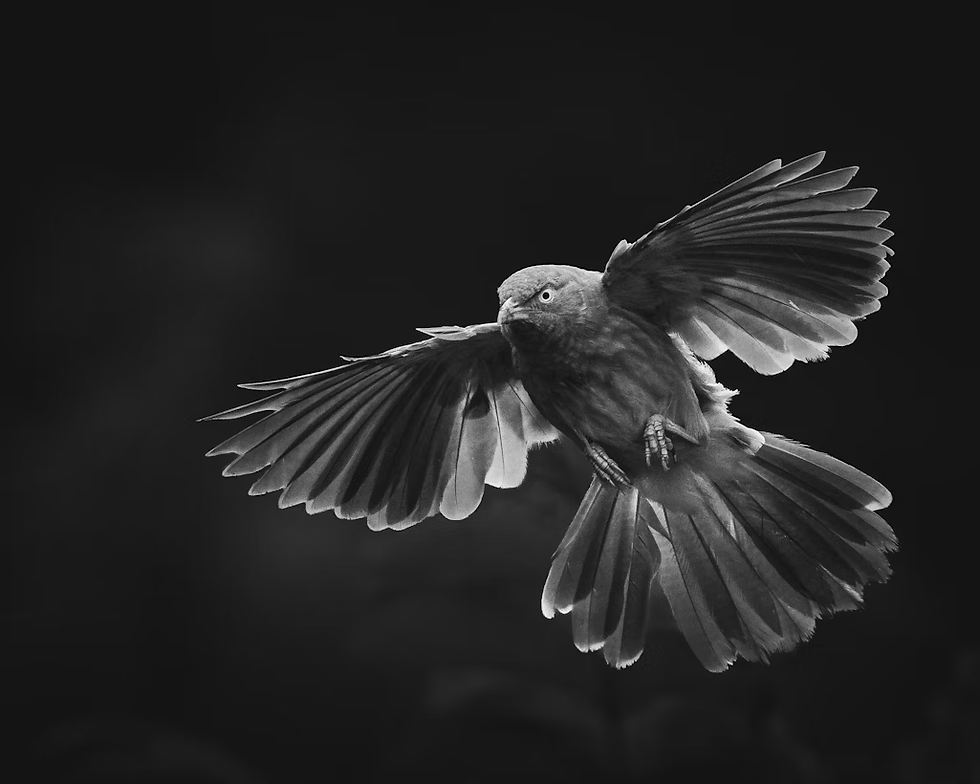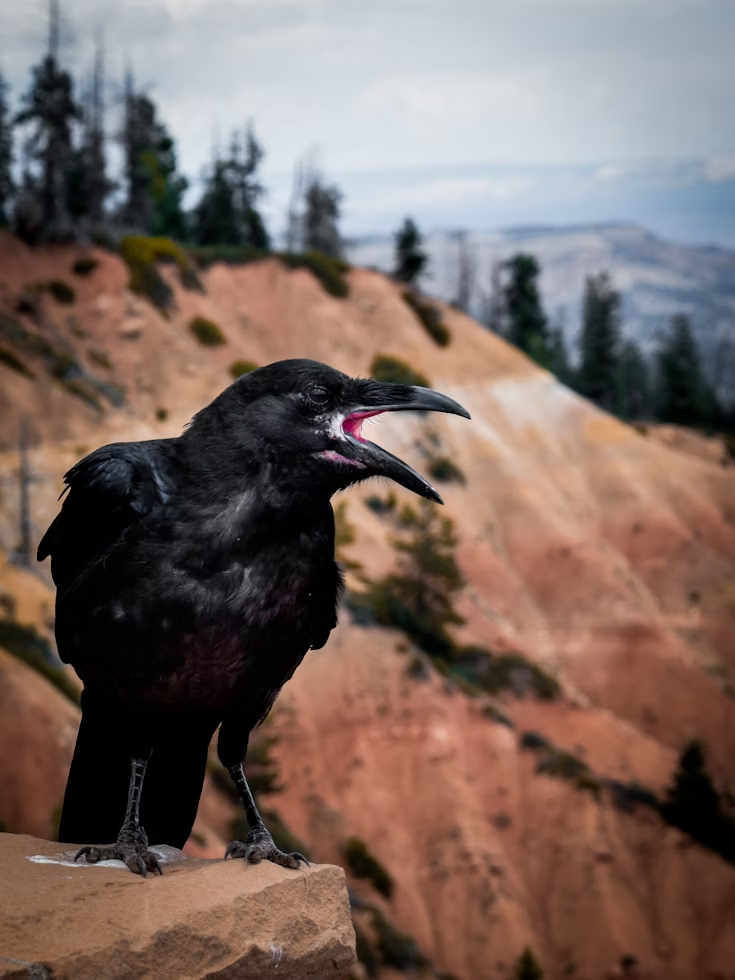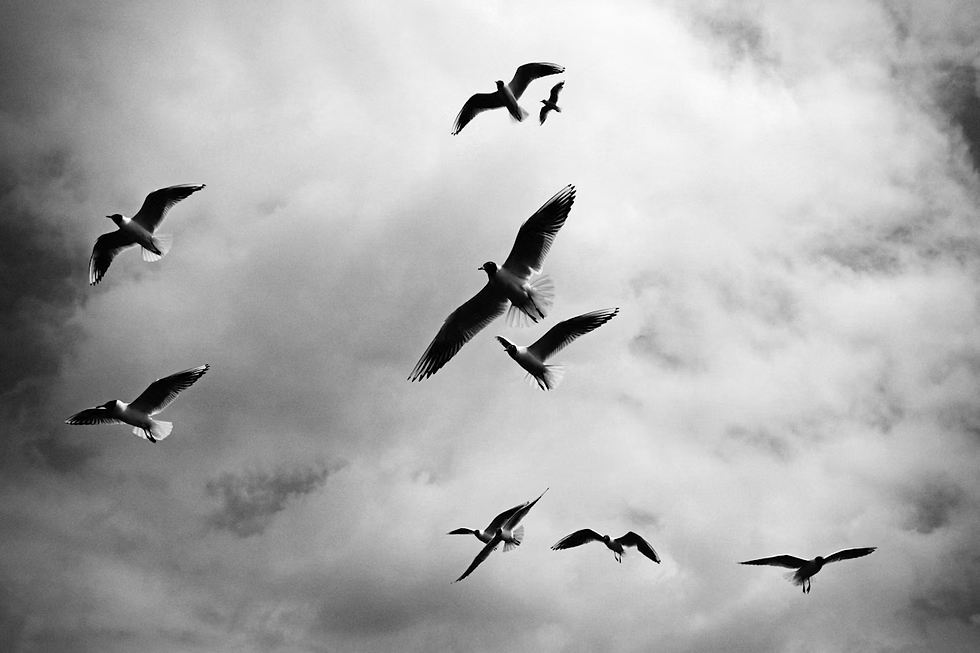The Origins and Science of Ornithophobia: The Fear of Birds
- Emma Calden
- Aug 21
- 5 min read

Ornithophobia, the fear of birds, is one of the more common specific phobias that affects a significant portion of the population. While most people may feel uneasy or startled by birds at times, individuals with ornithophobia experience an overwhelming sense of anxiety, panic, or distress when they come into contact with birds. This fear can disrupt everyday activities, affecting both the mental and physical well-being of those affected. To understand how this phobia develops, we need to look at the origins and the science of ornithophobia.
What is Ornithophobia?
Ornithophobia is defined as an irrational fear of birds. For those who experience it, even a simple sighting of a bird can lead to extreme physical and emotional reactions, such as panic attacks, rapid heartbeat, difficulty breathing, and sometimes even fainting. These responses are disproportionate to the actual danger, as most birds are harmless to humans. The fear is more about the anticipation and perception of threat rather than any actual harm that birds might pose.
This phobia can arise in a variety of situations. For some individuals, even seeing a bird fly overhead or hearing bird sounds can trigger the fear response. Others might feel anxious when they are near certain bird species or in locations where they have had past negative experiences. The intensity of the fear can vary widely between individuals, with some only experiencing mild discomfort, while others avoid certain environments altogether.
The Origins of Ornithophobia
The development of ornithophobia is influenced by a variety of factors, from personal experiences to societal influences. Like many phobias, ornithophobia may develop after a traumatic or negative event related to birds. For instance, being attacked or startled by a bird as a child may lead to an irrational fear of birds in adulthood. This is a form of classical conditioning, where an initial traumatic experience becomes linked to the presence of birds.

However, ornithophobia is not always the result of a direct negative experience. It can also be influenced by inherited traits or predispositions. People who have family members with anxiety disorders or phobias may be more likely to develop similar fears. In some cases, environmental factors or cultural influences may contribute as well. For instance, media portrayals of birds as aggressive or dangerous—such as in Alfred Hitchcock’s famous film The Birds—may heighten the fear of birds in certain individuals. The way birds are portrayed in popular culture can reinforce negative perceptions, further solidifying the fear in people who are already predisposed.
From an evolutionary perspective, some researchers believe that a fear of birds may have roots in our survival instincts. Early humans may have needed to be cautious of birds, especially those that could be predators or carriers of disease. While this instinct may no longer serve a practical purpose in the modern world, it may still influence how we perceive birds on a subconscious level.
The Science Behind the Fear of Birds
Understanding the science behind ornithophobia involves exploring how the brain processes fear. Central to this process is the amygdala, a part of the brain responsible for processing emotions, particularly fear. When someone with ornithophobia encounters a bird, their amygdala reacts strongly, signaling the body to initiate the “fight or flight” response. This triggers physical symptoms such as a rapid heart rate, shortness of breath, or dizziness, which are often disproportionate to the actual danger posed by the bird.

In many cases, the amygdala's response is an overreaction, triggered by an association the brain has made between birds and danger. This can happen after a traumatic event or as a result of learned behavior, where the individual comes to fear birds simply because they have been conditioned to do so. Over time, this reaction becomes ingrained, and the brain associates the sight or presence of birds with an imminent threat.
Additionally, birds’ erratic and unpredictable behaviors can contribute to the fear. Birds are known for sudden, sharp movements—whether in flight or when they quickly change direction—which can catch people off guard. Their flight ability makes them seem out of control or dangerous, as the unpredictability of their actions can trigger a heightened sense of threat. For some, it’s not just the bird itself but also the fear of not knowing what the bird might do next that intensifies the anxiety.
How Phobias Develop and Persist

Phobias like ornithophobia typically develop over time as a result of negative or traumatic experiences, genetic predisposition, and learned behavior. While traumatic events or exposure to negative stimuli can directly cause a phobia, the way people respond to fear also plays a key role. The avoidance behavior that is common in people with phobias (such as avoiding areas where birds are likely to be or refraining from watching movies featuring birds) can reinforce the fear over time. By avoiding the feared object or situation, individuals never have the opportunity to challenge or desensitize their fear.
This cycle of avoidance perpetuates the phobia. The more someone avoids birds, the more their brain reinforces the idea that birds are dangerous and should be feared. As a result, the phobia can become more entrenched, making it even harder to face and overcome the fear.
Overcoming Ornithophobia
Like all phobias, ornithophobia is treatable. One of the most common treatments is Cognitive Behavioral Therapy (CBT), which helps individuals identify and challenge their irrational thoughts about birds. In CBT, a therapist works with the individual to reframe their perceptions of birds and replace them with more realistic, balanced beliefs. Exposure therapy is also a key component of CBT, where patients are gradually exposed to birds in a controlled and safe manner, starting with less threatening images or videos before moving to real-life situations.
Another technique is gradual desensitization, where the person slowly and progressively encounters birds in a safe and structured environment. This might start with viewing pictures of birds, followed by watching birds in nature, and eventually allowing closer encounters. Over time, these exposures help reduce the emotional response to birds, allowing the person to feel less anxious or fearful when they are around them.
For those with more severe symptoms, medication such as anti-anxiety drugs or antidepressants can be prescribed to help manage symptoms of panic and anxiety. While medications do not cure the phobia, they can help control the anxiety associated with it, making it easier to engage in therapy.
Conclusion: The Origins and Science of Ornithophobia
Ornithophobia is a complex and often debilitating fear, but it is not one that individuals have to live with forever. By understanding the origins of the fear and how the brain processes fear responses, those with ornithophobia can begin to take steps toward overcoming it. Through therapy, gradual exposure, and support, individuals can learn to manage their fear and reclaim their lives. Birds are an important part of our world, and by working through the fear, we can learn to coexist with them safely and calmly, appreciating their vital role in the environment.
.png)










































